The 2025 Sustainable Development (ESG) Report of Tianjin Economic-Technological Development Area(Chapter I. The TEDA Model of Green Transition)

Building New Energy System
Proactively Promoting Renewable Energy
In 2024, a total of 95 new energy projects registered in TEDA, with a total installed capacity of 2.697 million kilowatts. Among them, there are 90 distributed photovoltaic projects with an installed capacity of 1.5465 million kilowatts; 3 decentralized wind power projects with an installed capacity of 20,500 kilowatts; and 2 centralized photovoltaic projects with an installed capacity of 1.13 million kilowatts.
The proportion of green electricity usage increased from 6.5% to 24.6%, photovoltaic power generation reached 103.78 GWh, and green electricity purchased through trading centers reached 657.7 GWh. (The statistical scope only covers TEDA East.)

Accelerating the Construction of New Energy Storage Systems
In August 2024, TEDA's first 46.9-MWh grid-side electro-chemical energy storage power station was put into operation, effectively improving the absorptive capacity of local renewable energy and playing an important role in load and peak adjustment of the power grid. The smart energy ultra-long-time energy storage power station project under construction in TEDA, with an installed capacity of approximately 1,115MWh, can continuously supply power for about 7 hours and release 1.17 million kilowatt-hours of electricity every day at full power output. It can provide approximately 388 million kilowatt-hours of peak-adjusting power to the grid and is scheduled to be put into operation by the end of 2025, further contributing to regional energy structure transition.
Continuing Endeavor in Comprehensive Energy Utilization
Nangang Industrial Zone has launched China's first cold and thermal energy exchange station, with an annual processing capacity of more than 2.6 million tons. This project marked the first time for China to realize energy coupling between an LNG receiving station and a major petrochemical production facility, saving 13 million cubic meters of natural gas and 3 million kilowatt-hours of electricity every year. A few kilometers away from the cold and thermal energy exchange station, the Tianjin Nangang LNG Cold Energy Comprehensive Utilization Demonstration Project is under rapid construction. Once completed, Nangang Industrial Zone will have an energy island integrating electricity, heat, cold and industrial gases which is estimated to save 17,200 tons of standard coal and reduce emission of approximately 18,600 tons of carbon dioxide annually.
Deepening Industrial Energy Efficiency Optimization
TEDA Investors Improving Energy Conservation and Carbon Reduction Management Capabilities
TEDA’s 33 major energy-consuming companies have implemented 72 technology-related energy-saving renovations and 116 management-related energy-saving measures, with a cumulative investment of 612 million yuan and saving 101,000 tons of standard coal every year.
Continuing Endeavor in Green Manufacturing System
Throughout 2024, TEDA saw another 17 new national-level green factories, and 2 new national-level green supply chain management enterprises. As of the end of 2024,TEDA has a total of 37 national-level green factories, 13 national-level green supply chain management enterprises, 73 Tianjin-level green factories, and 4 green supply chain management enterprises.They are the driving force for the green transition of TEDA’s manufacturing sector.
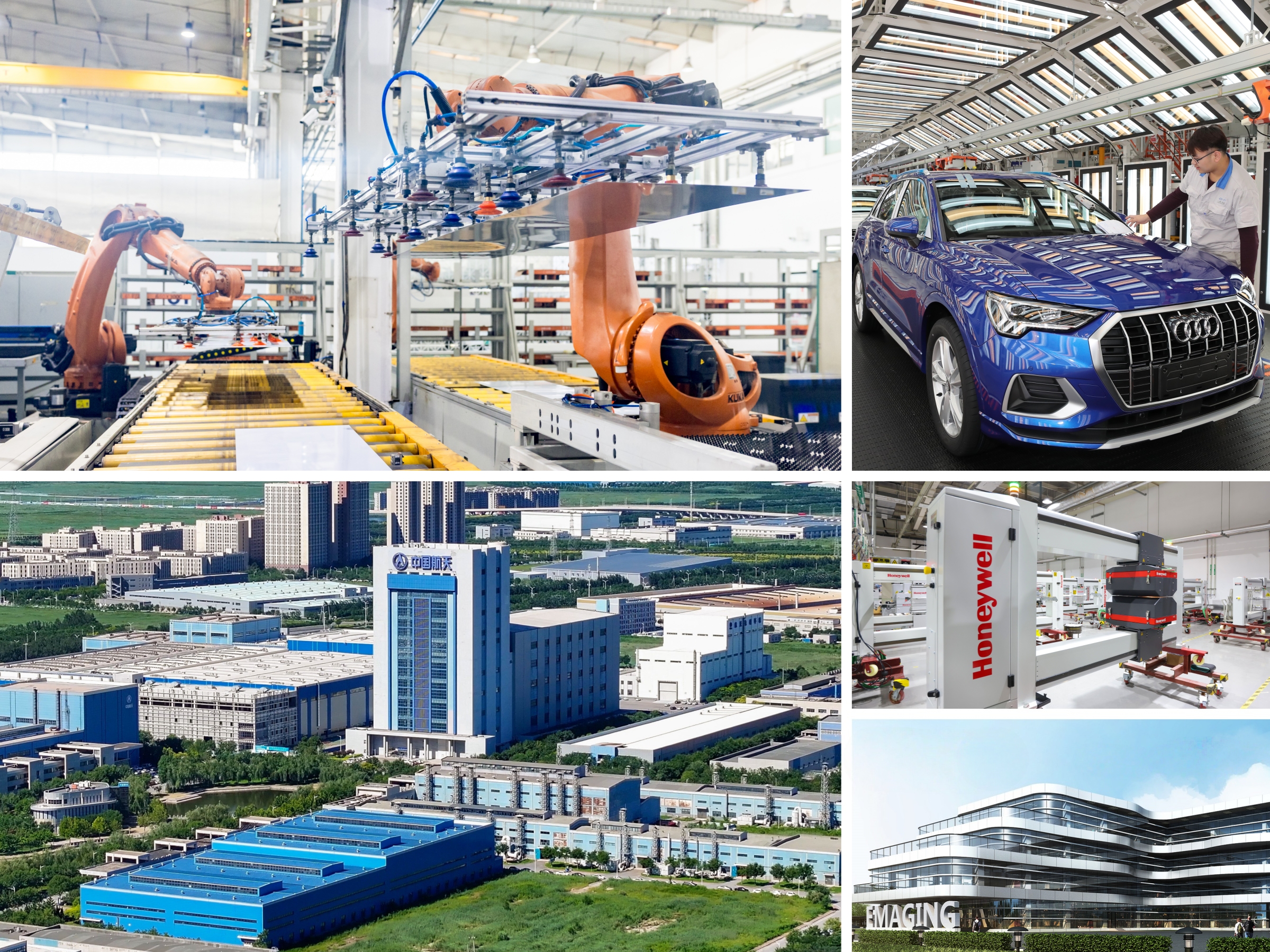

Systematically Bolstering Circular Economy
Uplifting Hazardous Waste Disposal Capabilities
In TEDA there are 4 hazardous waste disposal companies, including Tianjin Binhai Hejia Veolia Environmental Services Co., Ltd., Taiding (Tianjin) Environmental Protection Technology Co., Ltd., and Taigang Petrochemical Environmental Protection Company(Taigang’s disposal facilities were not fully operational). These four companies mainly adopt incineration, physico-chemical treatment, solidification(stabilization), and resource utilization. TEDA has been continuously upgrading the circular economy industrial chain with hazardous waste disposal capacity constantly improved.
Better Comprehensive Seawater Utilization Capability
The integrated seawater desalination and comprehensive utilization project in Nangang Industrial Zone saw visible progress. The first phase of the seawater desalination project has been put into operation, which can produce 150,000 tons of desalinated water every day and can replace surface water by 50 million tons every year. Nangang Industrial Zone is the first chemical park in the country to use desalinated seawater as its main water source.
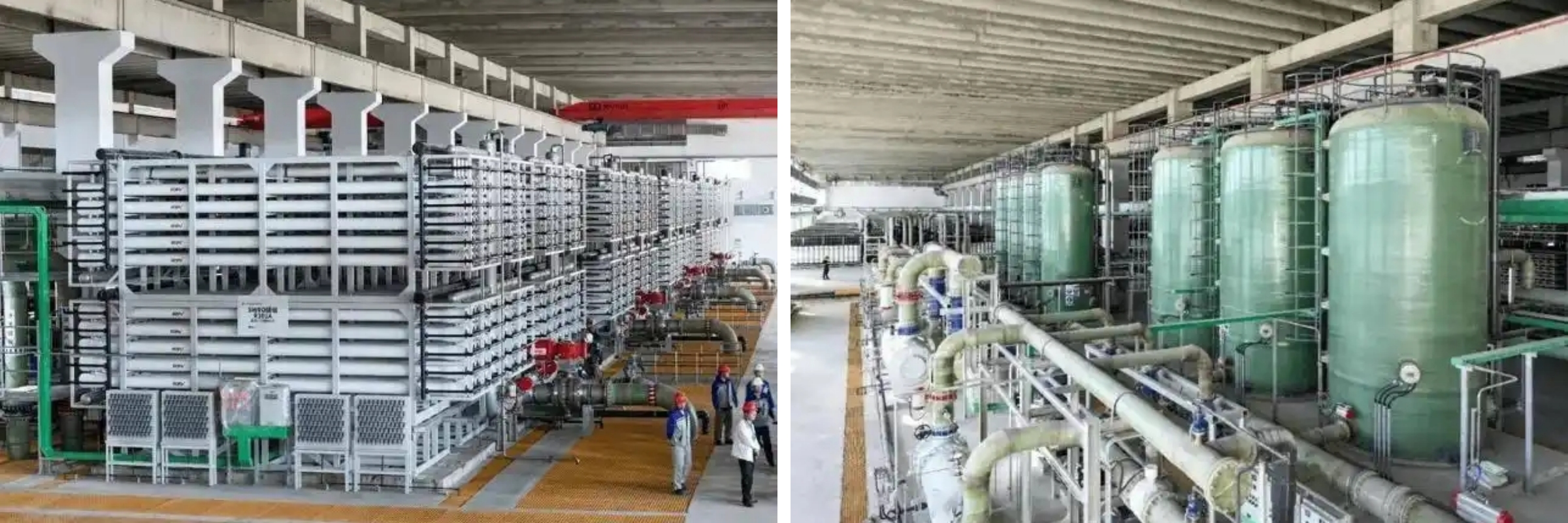
An Ever-improving Circular Economy Industrial Chain
The Tianjin offices of China Renewable Resources Industry Technology Innovation Strategic Alliance and the Beijing-Tianjin-Hebei Battery Environmental Protection Industry Alliance settled down in TEDA, bringing about 4 resource recycle enterprises for scrap metals and new energy batteries to the region, making new contribution to local circular economy industrial chain.

Environmental Infrastructures
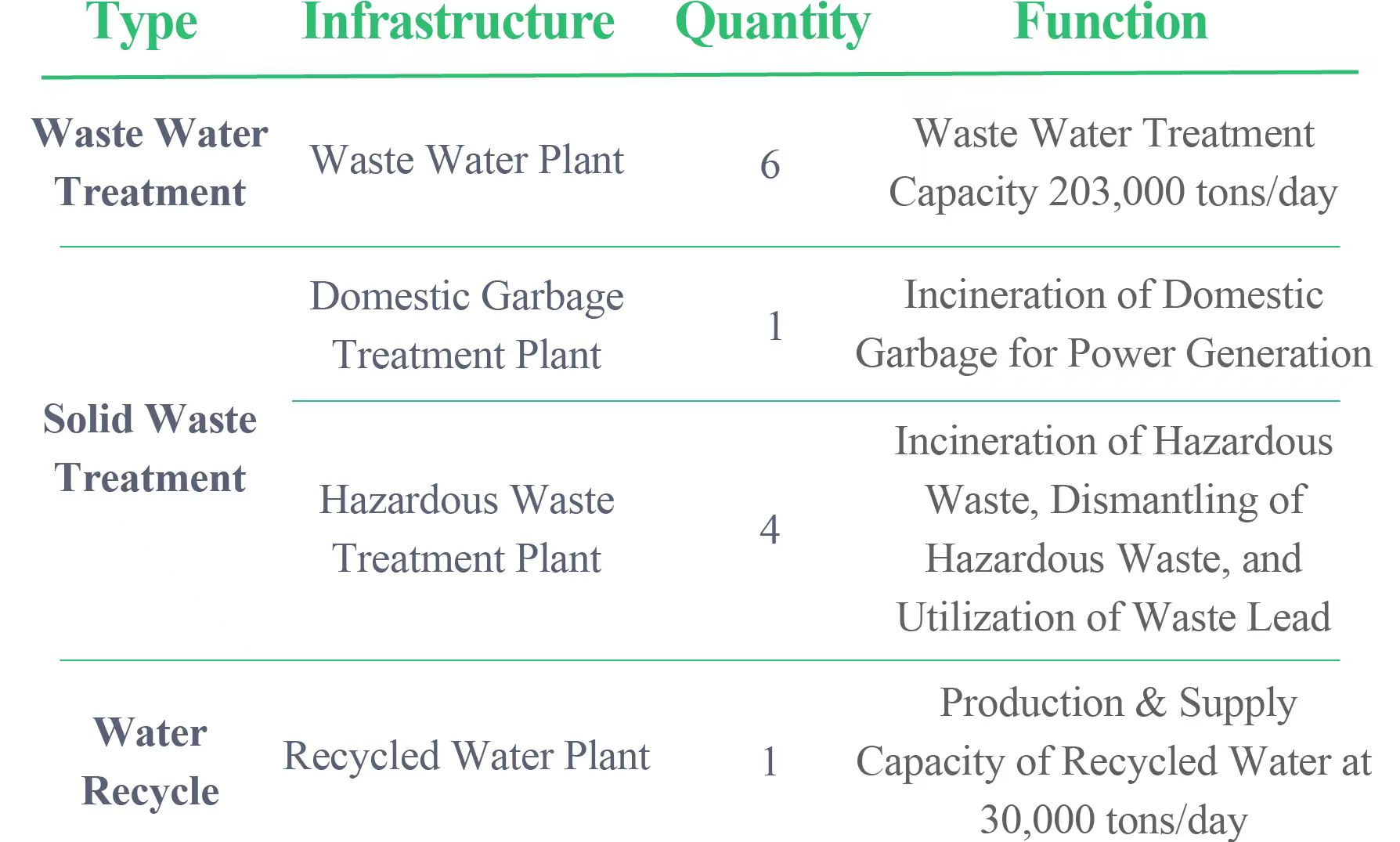
Green Buildings
In 2024, TEDA finished 13 green building projects with total floor area of 665,800 square meters, of which 592,100 square meters of buildings were recognized as star-rated green buildings.
Green Transport
Ever-improving Green Transport Infrastructure
TEDA has built up and launched a super charging demo station which integrates photovoltaic power generation, energy storage, charging & discharging, and intelligent detection of double-layer protective batteries. This super station is equipped with a total of 27 DC terminals(including 2 liquid-cooled DC terminals and 25 ordinary DC terminals) which can charge electric vehicles with high power at fast speed. It is a further replenishment of local charging infrastructure network.

Environmental Quality Statistics
Atmospheric Environmental Quality
In 2024, the average concentration of PM2.5 at state-supervised environmental monitoring points in TEDA was 37 micrograms/cubic meter, an improvement of 3 micrograms/cubic meter year on year; the number of up-to-standard days was 283, an increase of 37 days year on year; the proportion of up-to-standard days was 77.3%, ranking second in Tianjin, with a year-on-year increase of 9.9%.
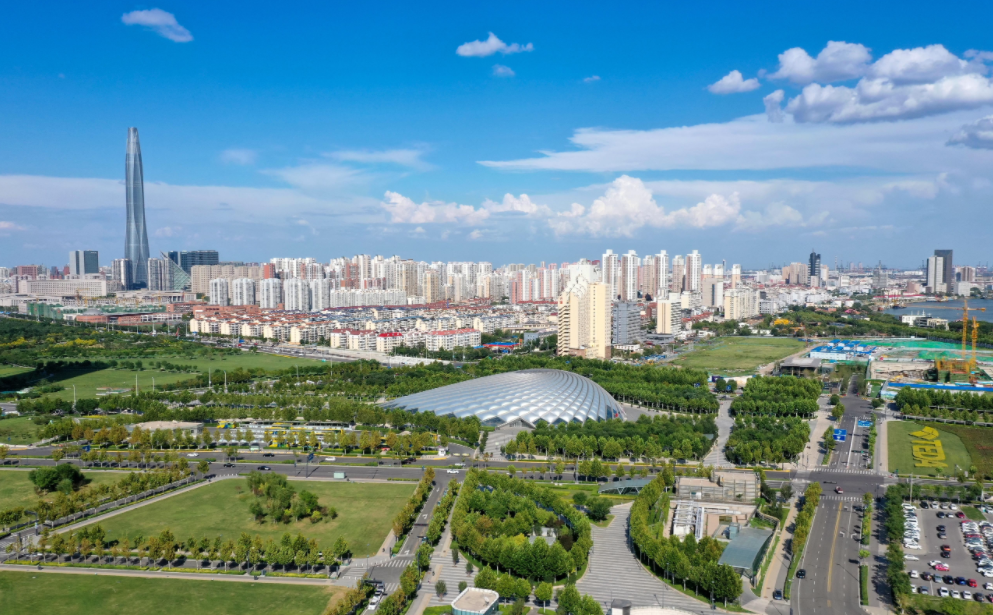
Surface Water Environmental Quality
Among the four surface water assessment sections of TEDA, the average water quality of the Jiyunhe Canal Tide Gate, the Yongding Xinhe River Tanghan Highway Bridge, and the East Drainage Open Channel was Class III, and the average water quality of the Haihe River Gate was Class V, meeting the annual assessment target by 100%. The proportion of excellent water quality of nearshore waters was 72.6%.
Acoustic Environment Quality
Throughout 2024, The overall sound environment quality of TEDA was good. The noise control indicators of Category-3 and Category-4a areas were comprehensively better than national standards. The compliance rates during day and night were both close to or higher than 90%. Noise management was accurate and efficient, effectively ensuring residents’quality of life and the health of the urban acoustic environment.

The East Eco Seawall of Nangang Industrial Zone Completed
TEDA has completed the construction of an ecological seawall project with a total length of 3,700 meters and a height of 7.3 meters in accordance with wave protection standards against once-in-200-year high tides and once-in-100-year waves, as well as important factors such as the first-level safety level. It is of great significance for the restoration of coastal ecological environment and the protection of sea benthos.
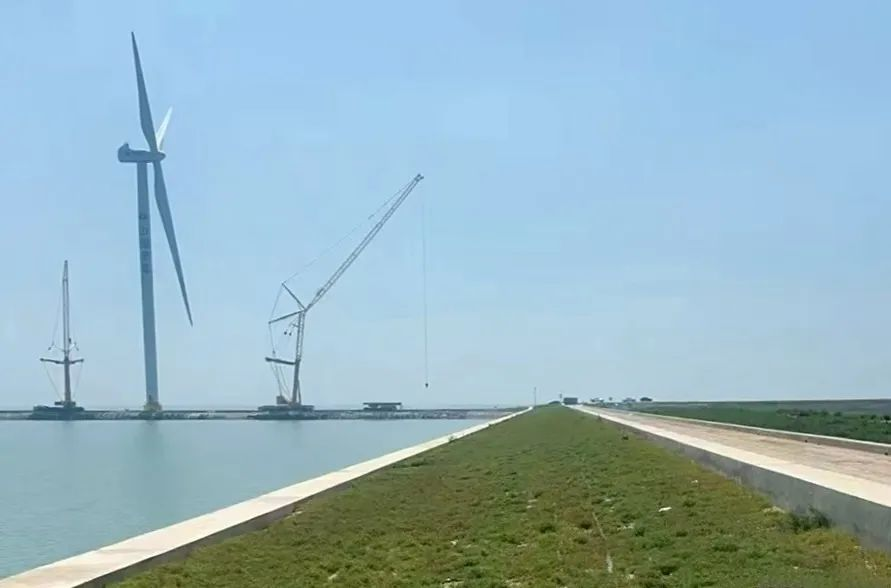
Marine Stock Enhancement Activities
TEDA organized more than 70 business leaders, coastal defense officers and fishermen as volunteer representatives to release 50 million China shrimp seedlings, 165,000 tongue sole seedlings, 15,000 kilograms of Philippine clams seedlings, and 10000 kilograms of Cyclina seedlings into the sea area near Nangang Industrial Zone to restore and enhance the self-regulation capabilities of Nangang’s ecosystem.

High-quality Pilot Programs for Carbon Peaking Proceeding Smoothly
In May 2024, TEDA was recognized as one of the first batch of carbon peaking pilot parks in Tianjin. In accordance with its Carbon Peaking Implementation Plan, a series of programs for industrial energy conservation, building energy conservation, and comprehensive utilization of resources were carried out proactively and effectively. In March 2025, TEDA was successfully selected into the second batch of carbon peaking pilot regions in China.

Carbon Emission Compliance Carried out Orderly
TEDA organized more than 40 key greenhouse gas emission enterprises to compile their respective 2023 greenhouse gas emission reports, and cooperated with the Municipal Ecological Environment Bureau to complete third-party carbon verification. Carbon emission compliance rate reached 100%.
Innovative CBAM Carbon Data Trading Mechanism
With the approval and registration of the Northern Big Data Trading Center, the Tianjin Climate Exchange completed the country’s first offline transaction of data products in response to the EU’s CBAM (“carbon tariff”). The two parties adopt carbon emission data of exported steel and wire products as the subject of the transaction. The Tianjin Climate Exchange issued a report to ensure the validity of the transaction data and effectively assisted downstream companies to carry out export business to EU.
Green Development Funds Leading Green Transition of Enterprises
In accordance with the Interim Measures for Promoting Green Development in TEDA, we encourage enterprises to carry out energy-saving technological transformation such as waste heat utilization, energy system optimization, and comprehensive utilization of resources. In 2024, we subsidized a total of 50 energy conservation and environmental protection projects, involving 18.75 million yuan. We also applied special fund of energy conservation and environmental protection from higher-level authorities for 4 projects, involving 49.17 million yuan.
Accelerating the Upgrading of Energy Conservation and Carbon Reduction Infrastructure
TEDA carried out road lighting upgrading of infrastructure such as light poles, power cables, and LED light sources, saving 700,000 kilowatt-hours of electricity every year and cutting emissions of about 700 tons of carbon dioxide.












 津公网安备 12019002000128号
津公网安备 12019002000128号

